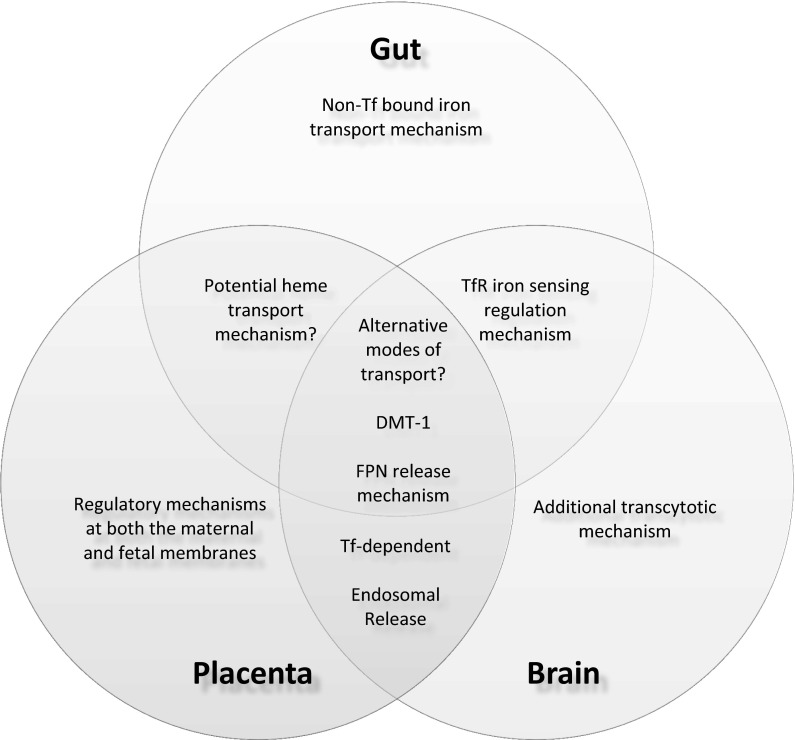Fig. 4.
Similarities and differences in iron transport at physiological barriers. When comparing iron transport at the gut, the placenta, and the BBB, there are three key similarities seen at all barriers. First, each barrier appears to demonstrate presently unidentified alternative transport mechanisms. Secondly, DMT-1 is involved in iron trafficking at each barrier. Finally, all three barriers also utilize ferroportin on their basolateral membrane for iron export. Evaluation of each overall mechanism suggests that the BBB is most similar to the placenta. Iron transport at both barriers is primarily transferrin-dependent and involves a mechanism by which iron is released from transferrin in the endosome for export into the intercellular iron pool. Unlike either of the other barriers, the gut requires uptake of non-transferrin bound iron. The BBB appears to be unique in its ability to transcytose transferrin-bound iron. Additionally, the potential for heme transport has been hypothesized in both the placenta and the gut, but there is no evidence to suggest that this occurs at the BBB. In terms of regulation, the BBB demonstrates transferrin–transferrin receptor feedback signaling that is similar to what is observed in the crypt cells of the gut. Meanwhile, the placental regulatory system is unique in that iron transport is under the control of both the mother and the fetus

